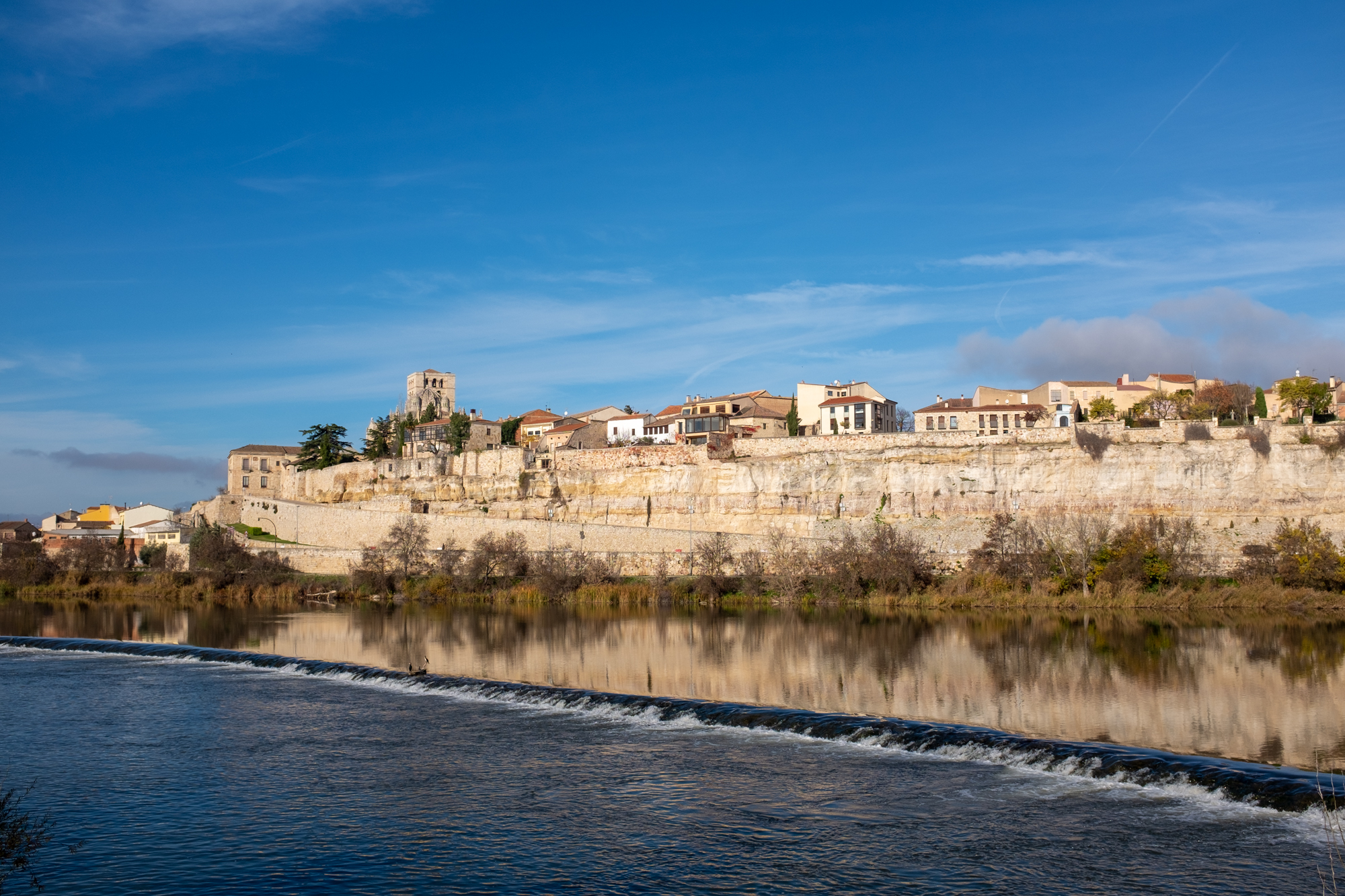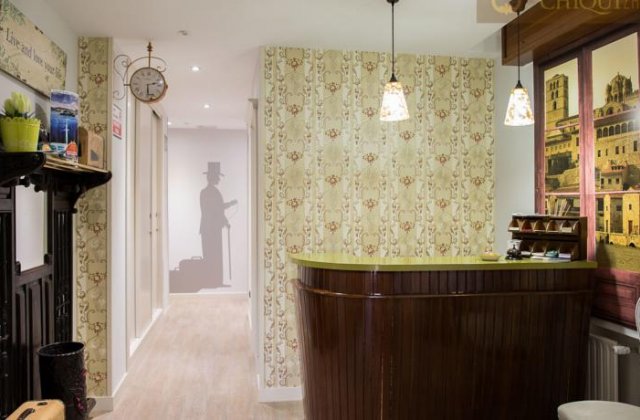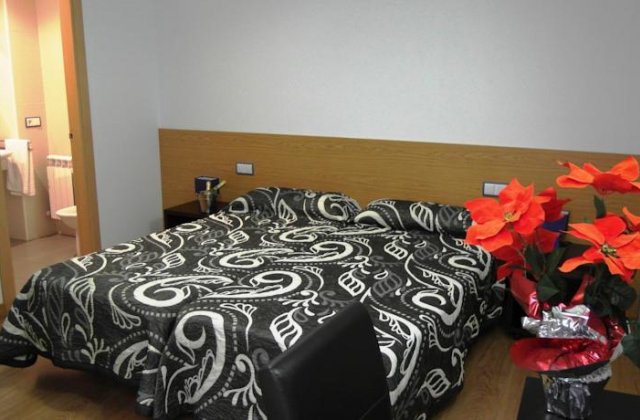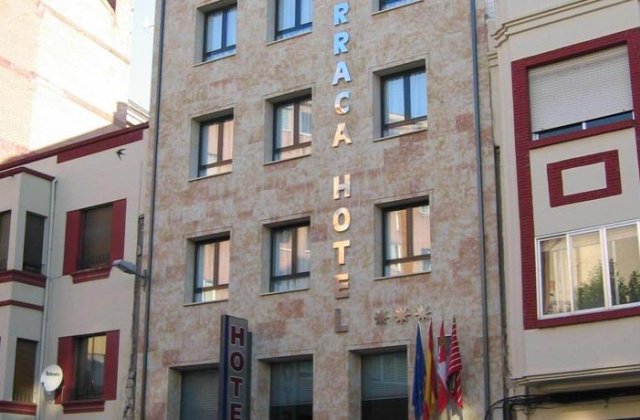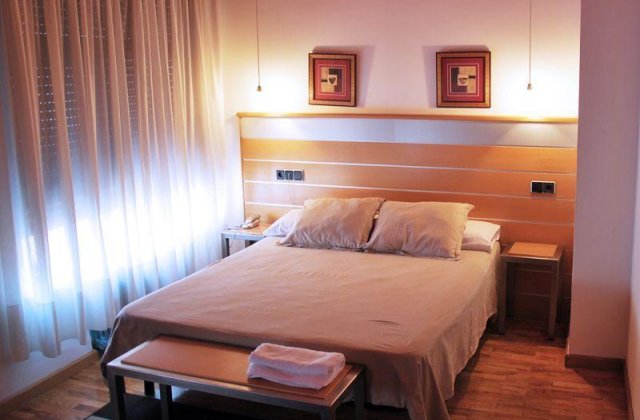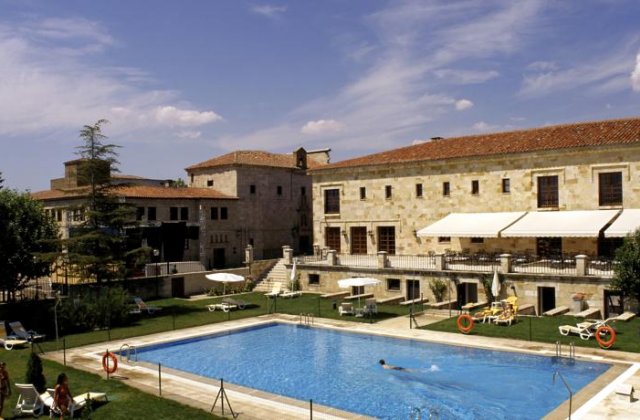Zamora is world famous for its concentration of Romanesque architecture (and art). There are 14 Romanesque churches in the old town alone and countless more in the surrounding region.
To top it all off it has the Catedral de San Salvador and the Castillo de Zamora, and these are the two that you should focus on if you are overwhelmed by the idea of visiting all of the others. They are adjacent to one another on the west side of the city (off the camino) overlooking the river. The Cathedral is Romanesque and was built in only 23 years, the blink of an eye when measured against other 12th century constructions. The castle is a few centuries older.
Three museums in Zamora merit a visit. They are the Museo Etnográfico de Castilla y León, the Museo Catedralicio de Zamora, and the Museo de Semana Santa Zamora (the best substitute for not being a part of the celebration in person).
In the evening you have a great opportunity to watch the sun set on the city, from the opposite bank of the river. Cross back over the bridge and turn right, following the road to the Playa de Los Pelambres (a riverside beach with views to the Cathedral. When you are ready to call it a night, cross back over the river via the new bridge next to the park (the HBridge of Poets). Once on the other side keep on going straight through the first roundabout. Just past it, across the field on your right, is the Iglesia de Santiago Caballero; it is the oldest and the smallest of the Romanesque churches but at night it is illuminated and it makes for a peaceful place to gather your thoughts.
From the church you can return to the city via one of two gates: up the road to your left is the Portillo de la Traición / Lealtad (the door of treason, where King Sancho met his fate) or down the road to your right to the Puerta del Obispo (the Bishop’s door, which leads directly to the Cathedral).
Notice: NOTE: There is a separate set of arrows which direct the way along the Camino Portugués de la Plata, a route which turns westward and into Portugal. At the same time, the Camino de Levante (from Valencia) enters Zamora from the east.
The Road: The camino through the old town crosses the Plaza Mayor onto Calle da las Costanillas which it follows downhill to the first roundabout. It crosses directly over the roundabout and keeps to this road as it passes through the next large intersection (passing the Iglesia de San Lázaro). Shortly after, this road splits and the camino veers to the left. This way is well marked with signs on posts. It is along this stretch that you may see conflicting arrows (see warning below).

